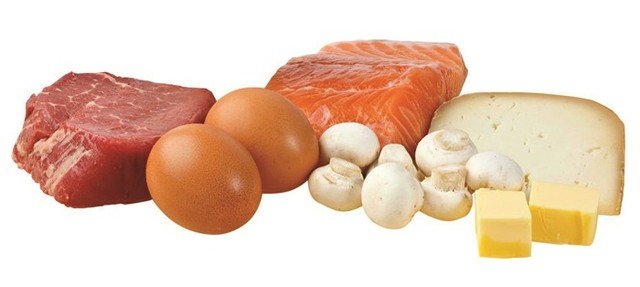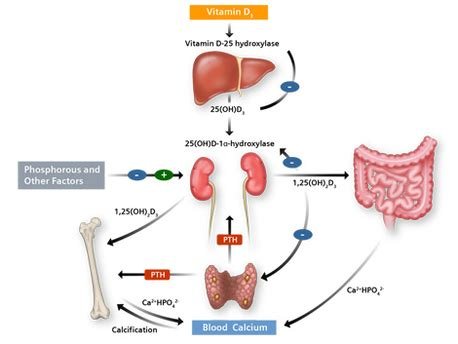Everything about vitamin D: its benefits, its origin, its importance in particular for body building and its link with testosterone.
What is vitamin D?
Vitamin D is actually a family of vitamins, which consists of vitamins D2, D3, D4, D5 and D6. Vitamins D2 and D3 are the two main forms of vitamin D and therefore we will not cover the others for the purposes of this article. Vitamin D2 is of plant origin, while vitamin D3 is of animal origin. Both are brought by the'food, but humans are also able to synthesize vitamin D on their own3, in proportions that are sometimes sufficient to meet its needs (therefore, it is not a real vitamin but a prohormone, but this is a simple detail).
Vitamins D2 and D3 both play equivalent roles. So much so that, when we speak generically of "vitamin D", we generally refer to these two vitamins at the same time, D2 and D3. This will also be the case later in this article.
The main function of vitamin D is to maintain the absorption capacity of calcium and phosphorus in the intestines at an adequate level. This helps maintain the concentration of calcium and phosphorus in the blood plasma and optimize the mineralization of bones, cartilage and teeth.
Vitamin D therefore plays a key role in particular in growth.
It also has many other functions within the body. It is notably involved in the regulation of cell growth, in neuromuscular function, in immune function and in the reduction of inflammations.
How does vitamin D work? How is it able to have such a broad spectrum of action? What are the causes and consequences of a deficiency? This is what we'll see in a full roundup of all things vitamin D. Let's start by exploring the different sources of vitamin D.
Sources of vitamin D
As we briefly mentioned in the introduction, there are two sources of vitamin D:food and the synthesis carried out by the organism itself.
There are actually quite a few foods containing vitamin D. These are mainly fatty foods, since vitamin D is fat soluble. The richest food in vitamin D3 so is cod liver oil (content of 200 to 250 µg per 100 g). Oily fish (such as salmon, tune, mackerel) as well as bacon also provide a certain dose of vitamin D3 (content of approximately 8 to 20 µg per 100 g). A low amount of vitamin D3 is also found in beef liver, cheese, egg yolk. Finally, some mushrooms can provide vitamin D2.
But intake from food is only part of the vitamin D resources available to the body. This is indeed capable of synthesizing vitamin D3 by itself, at the level of the skin. It is a molecule derived from cholesterol (7-dehydrocholesterol) which, when exposed to type B ultraviolet rays (from 290 to 320 nm), makes it possible to first synthesize a previtamin D3, which turns into vitamin D3. For this skin synthesis of vitamin D3 can take place, it is therefore necessary to expose yourself to direct sunlight. Moderate exposure to the face, arms and legs for five to thirty minutes, twice a week, would produce enough vitamin D to meet the body's needs. Nevertheless, a certain number of factors are likely to moderate the amount of vitamin D produced: this is the case of the season, the time of day, cloud cover, pollution mists, but also the pigmentation of the skin. skin and the use of sunscreen creams, which decrease the amount of UV that can penetrate the skin. A question comes to mind here: is prolonged exposure to the sun likely to cause excessive production and intoxication with vitamin D. The answer is no, because, in fact, UV destroys part of the vitamin molecules. D3 while promoting their training. In other words, a balance is struck between formation and destruction, which prevents any excessive amount from accumulating. However, this should not dispense with being cautious and limiting your exposure to the sun, since UV rays are carcinogenic and are in particular responsible for many cases of skin cancer.
Thus, a balanced diet associated with moderate exposure to the sun is therefore able to provide the amount of vitamin D that everyone needs.
But how is vitamin D really assimilated and what is its fate in the body? This is what we are going to see now.
Vitamin D metabolism
The body does not differentiate between vitamin D from food (and therefore assimilated by the terminal part of the small intestine) and vitamin D synthesized in the skin. Regardless of its origin, vitamin D undergoes the same treatment.
This treatment aims to activate vitamin D, because, as it is, vitamin D is biologically inert. It requires two successive transformations to be activated.
First, it accumulates in the liver where it is converted into an intermediate compound (25-hydroxy-vitamin D). This intermediate compound is then passed through the bloodstream to the kidneys, where it is converted into the active form of vitamin D (1,25-dihydroxy-vitamin D). The activated vitamin D then passes back into the blood and is transported to the organs that need it. Let's see in detail how it goes.
Mechanism of action of vitamin D
It is at the cellular level that vitamin D is absorbed by the organs. Indeed, the nucleus of target cells has a specific receptor on which only activated vitamin D can bind. Once the receptor-vitamin D complex has thus formed, it is the transcription of a given gene that is in turn activated or, in some cases, inhibited. Since the vitamin D receptor is present in most organs (especially in the brain, heart, skin, sex glands, prostate and breasts), vitamin D influences the expression of over 200 different genes. This explains the broad spectrum of action of vitamin D.
We now know the mode of action of vitamin D. For vitamin D to work with all its effectiveness, it is necessary that it be provided in adequate quantities to everyone. Let's see what is the recommended dietary allowance for vitamin D.
Recommended nutritional intake of vitamin D
According to ANSES (National Agency for Food, Environmental and Occupational Health Safety), the recommended nutritional intake of vitamin D is 5 µg per day for children over 3 years old and for adults. , and from 10 to 15 µg per day for the elderly. This recommendation was established considering that skin synthesis produces 50 to 70% of the daily requirements for this vitamin (this explains why it is lower than the recommendations in force in North America).
On average, the consumption of the French population is lower than this recommendation, since children aged 3 to 17 consume an average of 1,9 µg per day while adults between 18 and 79 years old consume 2,6 µg per day. However, most people do not seem to suffer from any symptoms related to vitamin D deficiency, presumably because skin synthesis compensates for low food intake. However, the question arises as to what are the consequences of a vitamin D deficiency, as well as the possible causes of such a deficiency.
Vitamin D deficiency: consequences and causes
The main consequence of chronic vitamin D deficiency is rickets in children and growing young people andosteomalacia in adults. In either case, the minerals no longer accumulate properly in the skeleton. Although the bones maintain a normal mass, they become deformed and this generates bone and muscle pain.
Another consequence specifically concerns the elderly: it is osteoporosis, which is characterized by a loss of bone mass and therefore by weakening of the bones.
Newborns, infants and pregnant women are at increased risk of vitamin D deficiency due to high requirements and, in young children, due to low exposure to the sun.
In general, the causes of a vitamin D deficiency can be:
- an unsuitable diet, which permanently reduces the intake of vitamin D (in particular vegetarian diets, without meat, without fish, without eggs or without dairy products);
- too little sun exposure or very pigmented skin
- incorrect absorption of food from the small intestine
- poor functioning of the kidneys that cannot convert 25-hydroxy-vitamin D into 1,25-dihydroxy-vitamin D.
It is also worth mentioning the consequences of an excess of vitamin D, often due to the ingestion of too much food rich in vitamin D or food supplements. Symptoms are headache, hypertension, thirst, nausea, weight loss or intense fatigue.
Vitamin D and testosterone
A scientific study conducted by an Austrian team and published in 2011 suggests that taking vitamin D in the form of dietary supplement increases the rate of Testosterone at men's. This result was confirmed by a second German study published in 2012. In these two studies, the measured rate of Testosterone varied in the same way as the measured level of vitamin D. The correlation between testosterone level and vitamin D level is however not yet definitively established and these results call for further studies in order to be confirmed and to establish the links cause and effect. It is likely, however, that if this result is confirmed, it has something to do with the fact that the cells of the testes have specific receptors for vitamin D.
If the Testosterone plays a major role in male sexuality (especially sperm production and libido), it is also involved in maintaining muscle mass. Any athletic man wishing to develop his musculature should therefore make sure to have adequate supplies of vitamin D in order to guarantee his testosterone level and thus facilitate the development of his musculature. This is especially true in the context of bodybuilding.
Importance of vitamin D for bodybuilding
But this is not the only reason which could encourage bodybuilders to consume vitamin D. Here are some examples that show the importance of vitamin D for bodybuilding:
- Vitamin D plays a role in neuromuscular function. As such, it increases muscle tone and performance and therefore promotes training.
- Vitamin D is involved in immune function. By helping to fight against all kinds of illness (including simple colds), it helps fight fatigue and therefore, again, makes training more effective.
- Vitamin D helps the bones to maintain good condition. Because bones and muscles are linked to each other, it is not possible to have strong musculature without having strong bones.
- Finally, according to a recent scientific study, vitamin D could help eliminate fatty cells and therefore promote drier muscles. This effect has at least been demonstrated in mice. The reality of this effect in humans is still uncertain.
The intake of vitamin D in the appropriate amount therefore seems to be beneficial to bodybuilding enthusiasts as well as to athletes in general. But full studies will still need to be conducted on this subject in the future to establish the benefits of vitamin D supplementation.
To conclude this dossier, I invite you to consult our article: The Importance of Diet in Bodybuilding who will tell you even more about the useful contributions to our sport.






